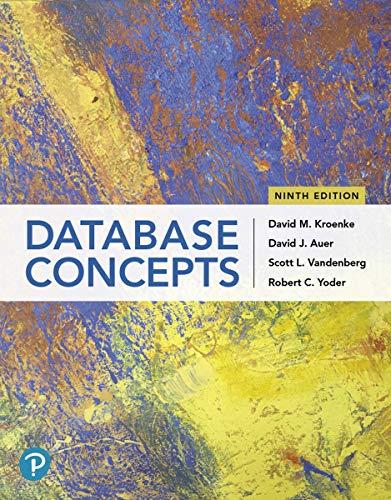Answered step by step
Verified Expert Solution
Question
1 Approved Answer
Draw for me a flowchrart with the below structure;Flowchart Structure Start Block This is the entry point of the flowchart, simply labeled Start. Data Initialization
Draw for me a flowchrart with the below structure;Flowchart Structure
Start Block
This is the entry point of the flowchart, simply labeled "Start".
Data Initialization Block
This section initializes the bankzdata list.
Label: "Initialize bankzdata with transaction records".
Function Blocks
Each function in the program like filtertransactionsbyamount is represented as a separate flowchart sequence.
For filtertransactionsbyamount:
Start with "Function: filtertransactionsbyamount".
Use a loop block to iterate over each transaction.
Inside the loop, use a decision block: Is transaction amount minamount?".
If Yes, add the transaction to the filtered list.
If No move to the next transaction.
End with "Return filteredtransactions".
Follow a similar structure for the other functions totalamountondate, findtransactionsbyaccount, updatename adapting the decision criteria and actions accordingly.
Example Usage Blocks
These blocks demonstrate how each function is utilized in the program.
Example for filtertransactionsbyamount:
Start with "Call filtertransactionsbyamount with bankzdata,
Then a display block: "Display transactions over $
Display Blocks
After each function call in the example usage, include a block to display the results.
Label: "Display Result".
End Block
The final block of the flowchart, labeled "End".
SubFlowcharts for Each Function
Inside the main flowchart, each function's flowchart acts as a subroutine, detailing its specific logic.
Arrows from the main flowchart divert to these subflowcharts when a function is called and return to the main flow after the function execution is complete.
Connecting Arrows
Arrows are used to connect all blocks, indicating the flow of execution.
Arrows from decision blocks should be labeled with "Yes" or No to clarify the path taken based on the decision.
Visual Representation
Use different shapes for different types of blocks:
Oval for Start and End blocks.
Parallelograms for inputoutput like displaying results
Rectangles for process steps like function calls and operations
Diamonds for decision blocks.
This structured approach will help in creating a flowchart that clearly represents the logic of the Bank Z program, making it easier to understand the flow of control, decisionmaking processes, and the overall structure of the program. For actual creation, a flowchart drawing tool or software would be required.
Step by Step Solution
There are 3 Steps involved in it
Step: 1

Get Instant Access to Expert-Tailored Solutions
See step-by-step solutions with expert insights and AI powered tools for academic success
Step: 2

Step: 3

Ace Your Homework with AI
Get the answers you need in no time with our AI-driven, step-by-step assistance
Get Started


